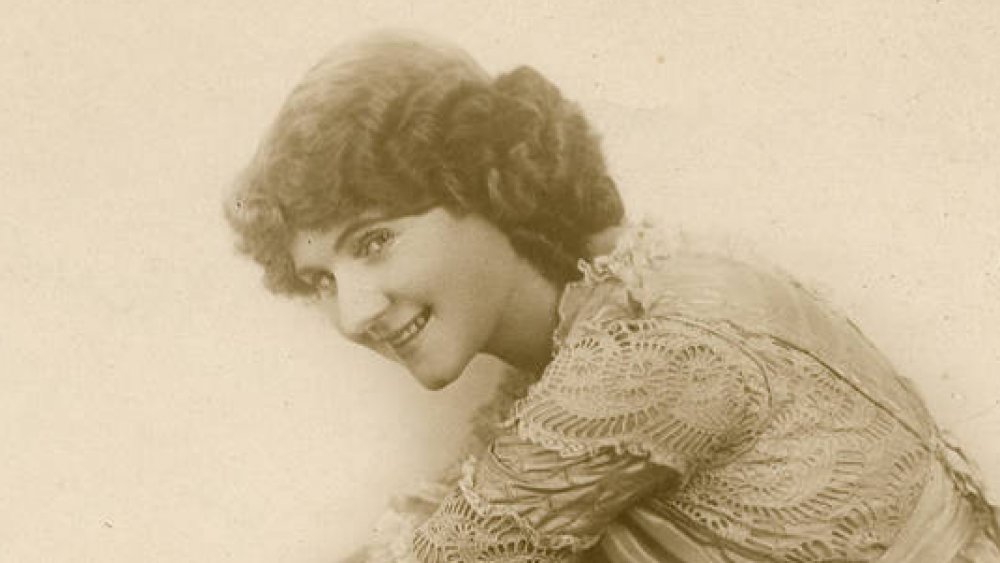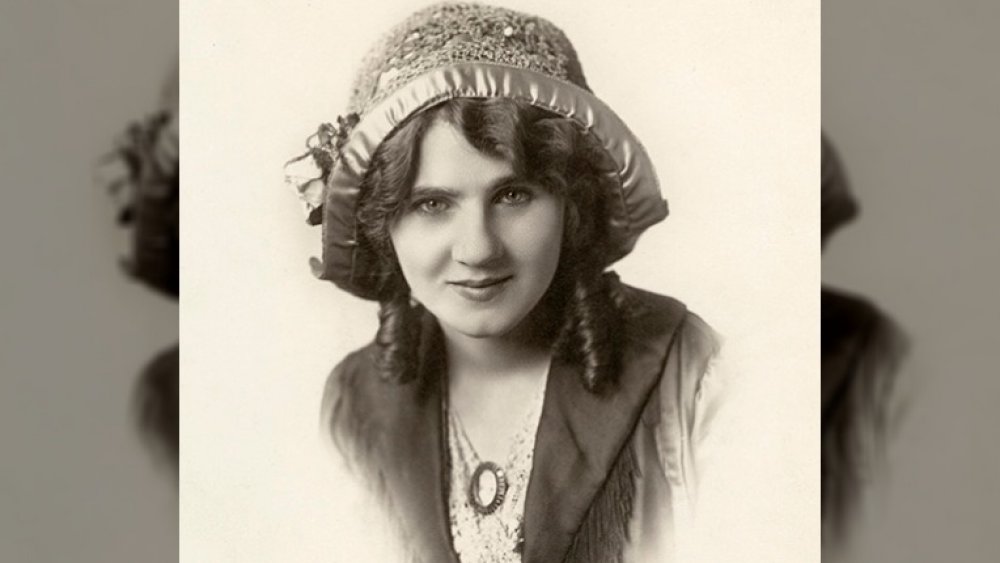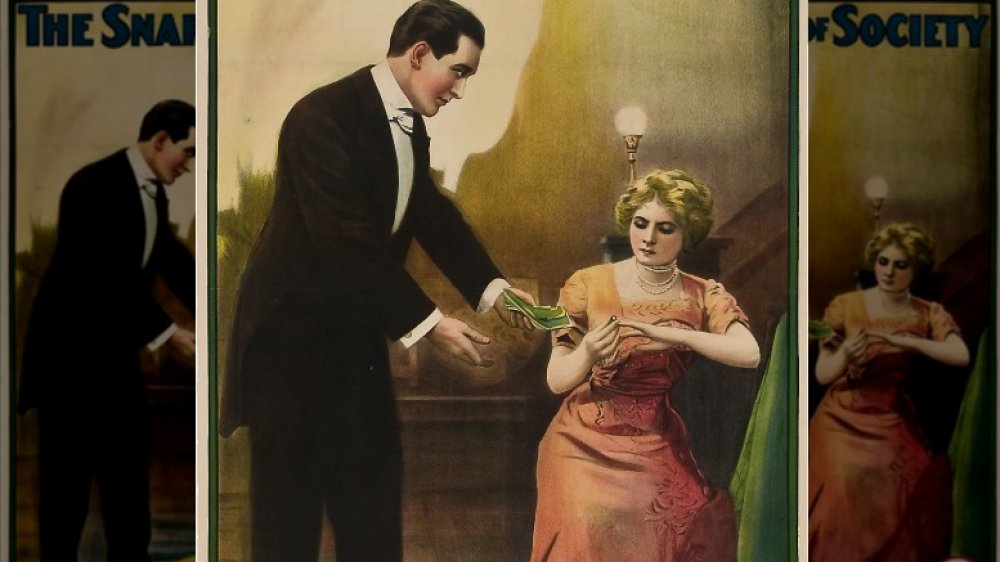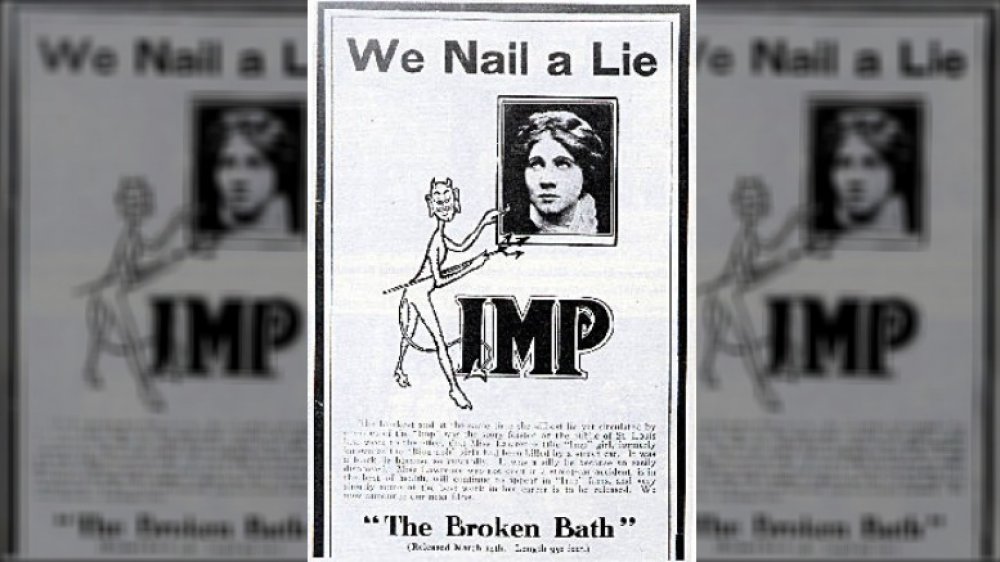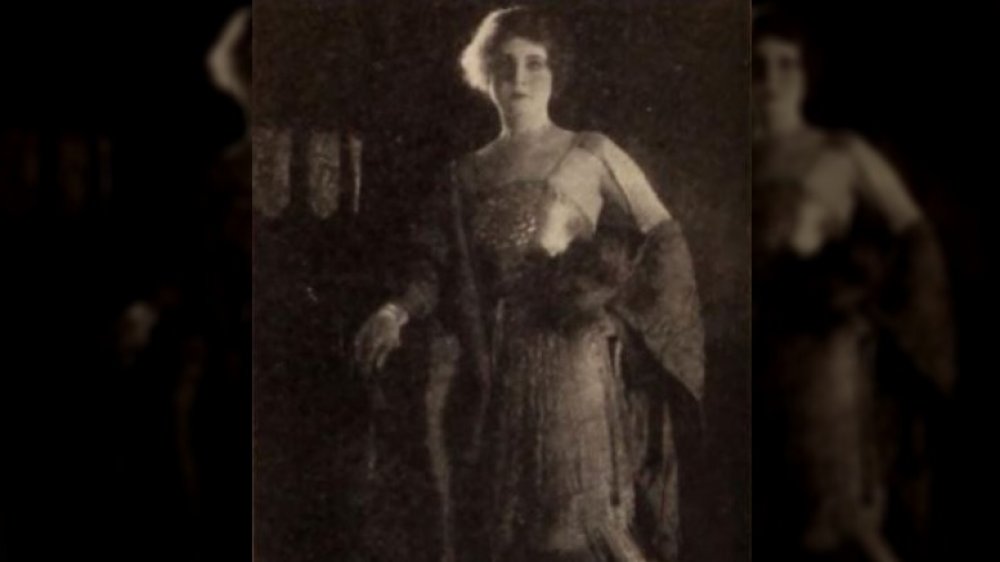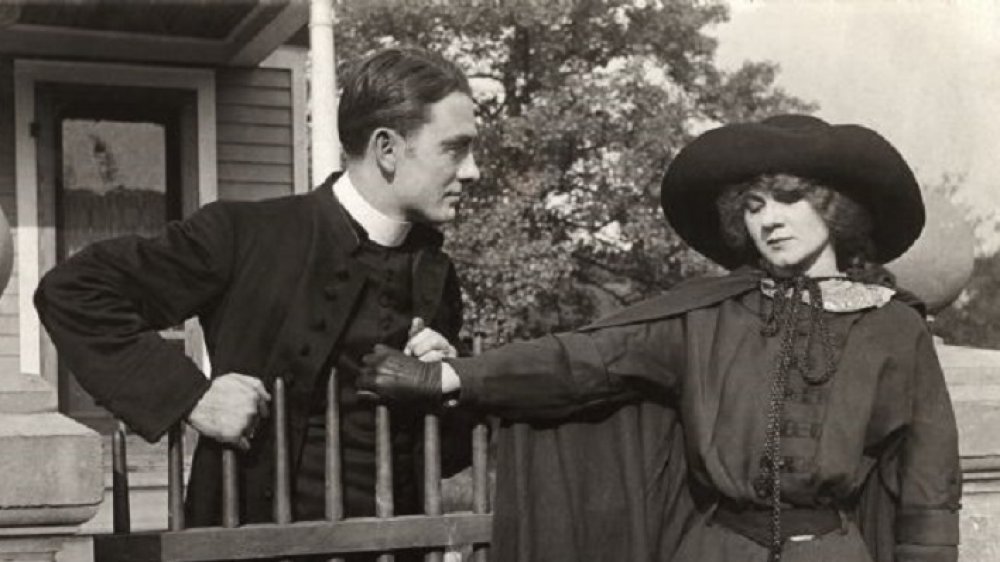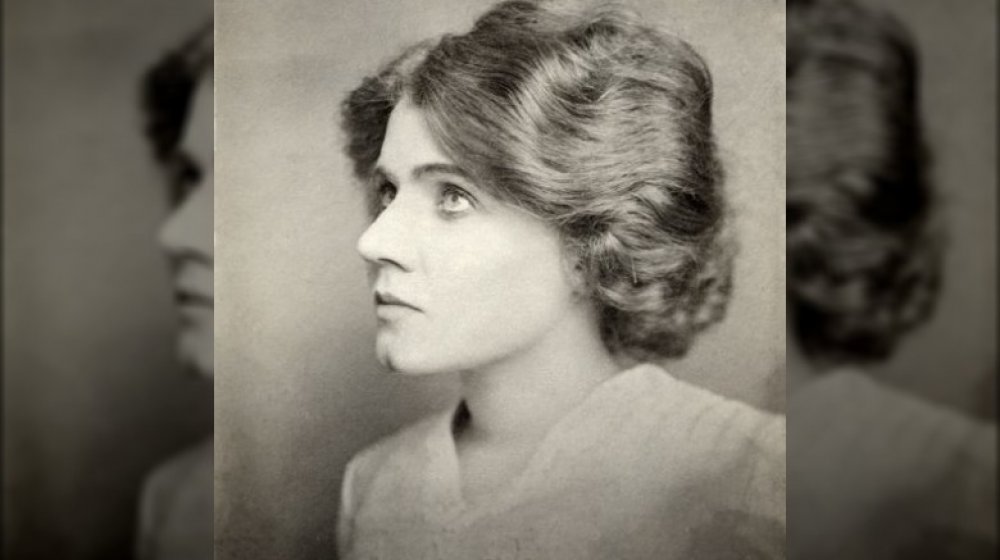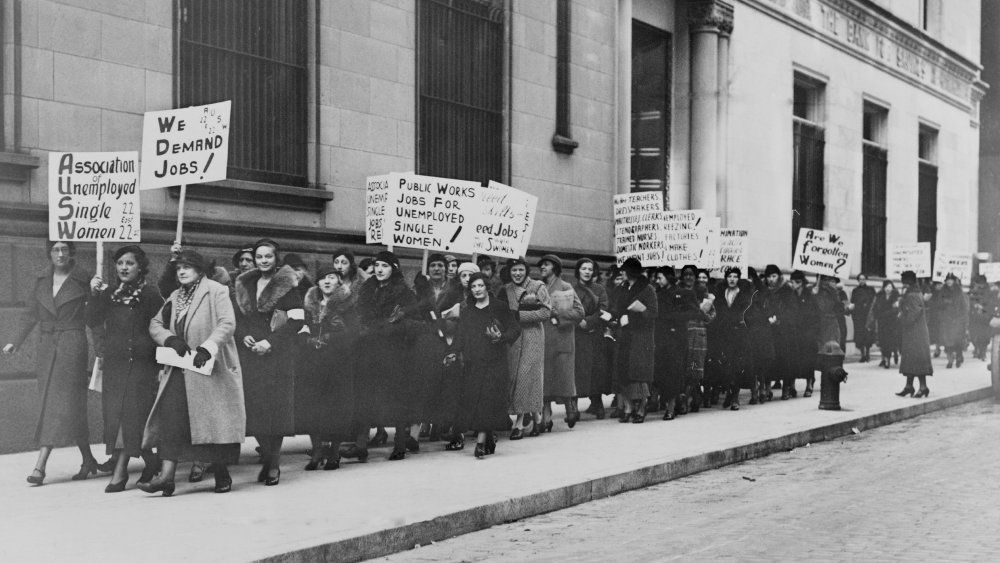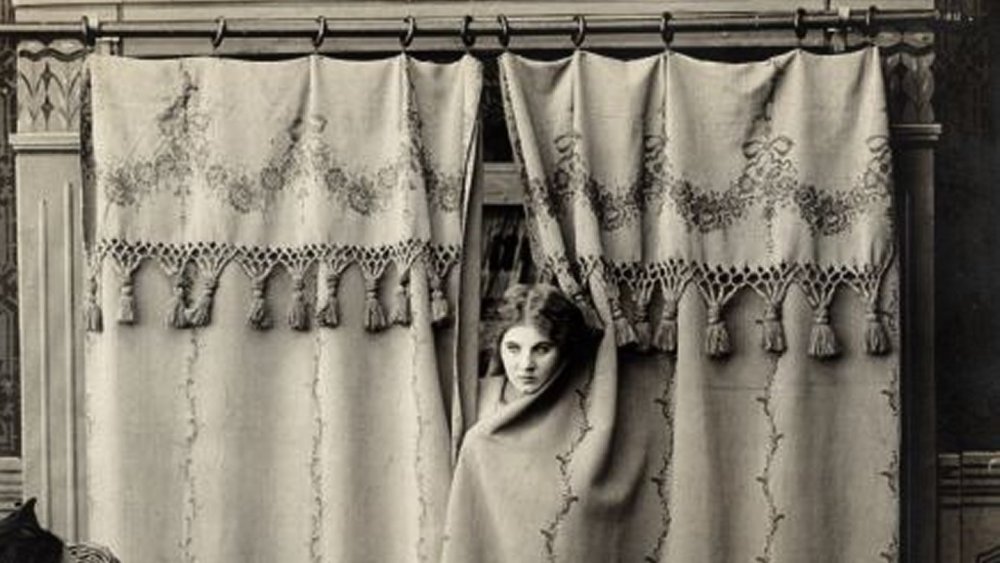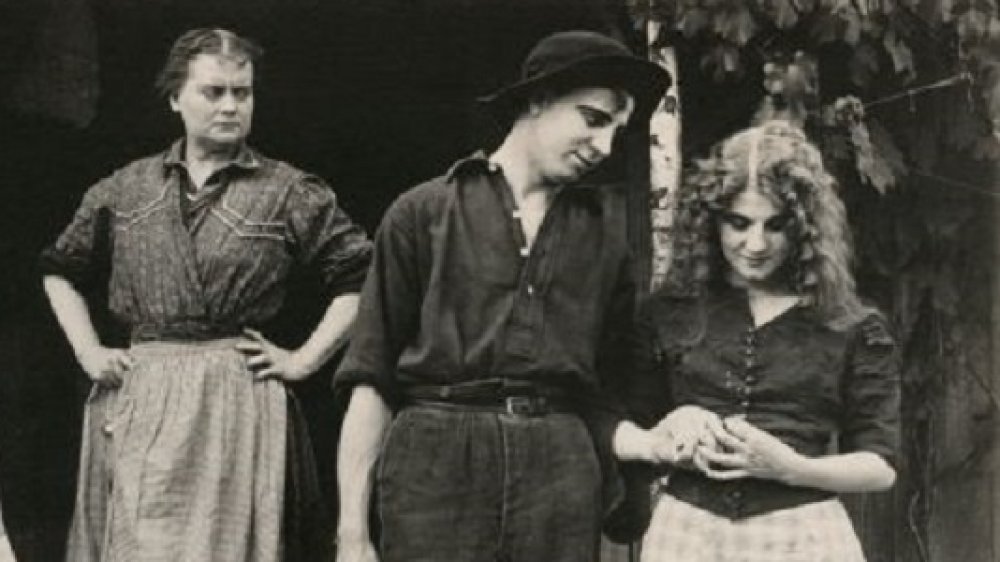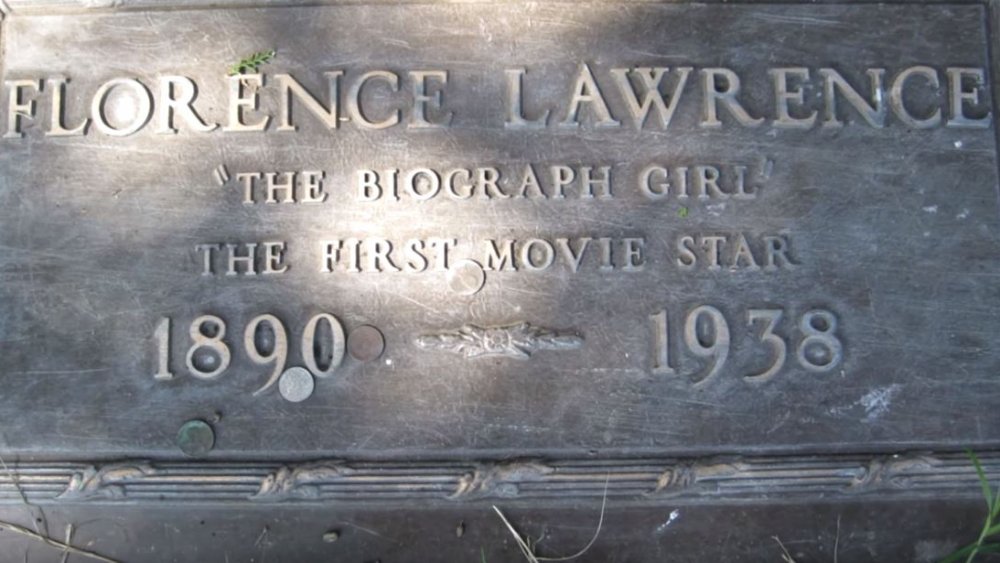The Tragic Life And Death Of The World's First Movie Star
While it's sometimes said that the era of movie stars has ended — I.E., these days, you're not going to get butts in seats for some subpar action movie, just because Tom Cruise's face is on the poster — actors are still a powerful force in Hollywood. From contemporary legends such as Chadwick Boseman and Joaquin Phoenix, to classic stars of the past like Elizabeth Taylor, actors are some of the most well-known figures in the world today.
However, back when cinema was still an art form that was just in its infancy, actors were underpaid and uncredited. In fact, the powers-that-be were careful to made sure that the faces on screen were kept anonymous, so that they wouldn't be able to use notoriety and name recognition to demand more money.
That all changed with the smashing success of Florence Lawrence, a woman often labeled as the first movie star in history, who blazed a trail that many subsequent performers have followed ... even though, in her personal life, she struggled against depression, heartbreak, and disease. This is the story of the tragic life and death of the world's first movie star.
Florence Lawrence was born into the entertainment industry
Born in Hamilton, Ontario, Canada in 1886, according to Columbia University, the girl originally known as Florence Bridgwood lived her earliest years on the stage. Her mother, Charlotte — better known as Lotta Lawrence — was a famous actress and stage manager, whose company traveled from place to place performing shows. As a result, the formative experiences of childhood all happened on tour.
The young Lawrence made her own stage debut when she was only 6-years-old, according to a 1938 issue of Reading Eagle, under the rather theatrical name of "Flo, the Child Wonder." The young girl was passionate about acting from the beginning, though as the Women Film Pioneers Project points out, she didn't have much choice: Thanks to a domineering, highly professional mother, and the other influences surrounding her, the course of her life was charted out. Lawrence herself, sadly, struggled to perform the depressing subject matter of some of her mother's plays, sometimes crying herself to sleep. Thankfully, once her mother realized the trauma it was causing to the poor child, she dropped the plays, for her daughter's sake.
Florence Lawrence's father, a carriage builder named George Bridgwood, was mostly a non-presence in his daughter's life. By Lawrence's fourth birthday, her parents were separated. By the time she was 10, he had died from coal gas poisoning. Following this tragedy, the family gave up life on the road, and took up residence in Buffalo, New York, where the kids began attending school for the first time.
Florence Lawrence's early movie roles were uncredited
The launch of Florence Lawrence's cinematic career happened alongside the launch of cinema itself. She got in on the ground level, and in 1906, according to History, she was hired by Thomas Edison's movie studio to play the daughter of Daniel Boone, marking her first role on the big screen. With her background on the stage, she slid easily into the world of silent pictures, and within a year, she had scored roles in almost 40 subsequent films for Vitagraph Studios. Yes, 40. This was followed by a 1908 stint with D.W. Griffith's Biograph Studios.
Everybody loved this talented, fascinating actress. The public demanded more of her. Her name, though? To the world, that was a total mystery, and she became known as, simply enough, "the Biograph girl." This wasn't unusual at the time, as Vanity Fair explains. Screen actors were never credited, due to the corrupt practices of the Edison Trust cartel, who feared — with good reason, however ethically dubious — that once people started recognizing and celebrating actors, these film workers could start demanding higher wages. So, as the Biograph Girl delighted film goers across the United States, Lawrence herself was only paid $25 a week.
A faked death stunt propelled Florence Lawrence into the world's first movie star
Lawrence's famed stint as "the Biograph Girl" ended when she did something D.W. Griffith would not accept — namely, she tried to find additional acting work. Griffith fired her.
Soon enough, though, she was scooped up by Carl Laemmle of Independent Motion Picture Co. (IMP), according to Vanity Fair. Whereas Griffith had treated Lawrence as disposable, Laemmle considered her the best actress of her generation. So, he cooked up an insane scheme to convince the world of this fact: First, he intentionally leaked false rumors about how the Biograph girl, who everybody loved, had died in a car crash. Second, once this gossip had spread, Laemmle then bought ads in the papers, titled "We Nail a Lie," which self-righteously corrected the rumor, publicized Lawrence's name, and announced that Lawrence was going to be starring in IMP's new film. Third, to seal the deal, the producer scheduled a big new appearance for his new actress in St. Louis, and surely enough, people rushed to embrace her. Fans wanted to see her. Crowds surrounded her. Florence Lawrence became famous, overnight, and she would henceforth be recognized as the world's first movie star.
Within a few years, Lawrence had carved out the celebrity paradigm still celebrated today. She commanded a high salary. She starred in 302 films. Magazines pasted her face on their covers. Fans across the country sent her mail. The movie industry had forever changed.
Florence Lawrence suffered through a problematic marriage
Florence Lawrence's first marriage was to a fellow actor, Harry Solter, and it was anything but peaceful. Whenever the marriage got rocky, according to biographer Kelly R. Brown, Solter would threaten to kill himself. It was at the height of Lawrence's career when this marriage began truly falling apart, as explained by the Women Film Pioneers Project, with the low point occurring when Lawrence walked away from Solter, and he responded by rushing across the ocean and taking up residence in Europe. From overseas, Solter wrote frequent letters to his separated wife, sometimes pleading for her forgiveness, sometimes trying to entice her back with professional propositions, and other times threatening to commit suicide. The two reunited toward the end of 1912, and attempted to continue their joint personal/professional relationship, but clearly, it wasn't a situation that was going to last forever.
By, 1916, four years after their previous separation, they officially filed for divorce. In the years afterward, Lawrence went to marry twice more. Harry Solter, on the other hand, died in 1920 of a stroke, according to Find a Grave.
If you or anyone you know is having suicidal thoughts, please call the National Suicide Prevention Lifeline at 1-800-273-TALK (8255).
Florence Lawrence was injured on set
If Florence Lawrence was the first movie star, she was also, sadly, the first Hollywood celebrity who saw her fame drop off the face of the planet. It started in 1914 when a series of tragic accidents turned her from a household name into an injured, unknown figure.
Lawrence's first major injury happened on the set of Pawns of Destiny, according to Bright Lights Film Journal, when a stunt went awry and she was hospitalized. Her producer, Carl Laemmle, refused to pay for her medical expenses. Lawrence blamed her husband, Harry Solter, for the injury — she claimed that he had pushed her to perform the dangerous stunt — and their marriage swiftly fell apart. Tragically, that same year saw Lawrence injured in another accident on the set, wherein a staged fire went crazy: Upon seeing a coworker struggling in the flames, Lawrence courageously rushed back into them. Her rescue effort was successful, rendering Lawrence a hero, but it also left severe burns on her face and throat. Recovery took six months, and she underwent several plastic surgery operations.
Sadly, Lawrence's career never truly recovered from these terrible events. While her visible physical injuries were minimal — just a scar under her chin, according to History — the psychological damage was severe. Historians have speculated that Lawrence may have suffered from post-traumatic stress disorder, as well as depression. At the time, though, her changed behavior was not treated with empathy, but avoidance and condescension, as coworkers found her "difficult" on set.
Florence Lawrence was not just an actress, but an inventor
Considering the important role that Florence Lawrence played in film history, it's a crime to see how infrequently her cinematic career is remarked upon. What's also forgotten, though, is that her creativity, when applied to automobiles, helped shape the world today.
How so? Well, Lawrence was a genuine car enthusiast, according to the Massachusetts Institute of Technology, and she was filled with ideas about how to improve the driving experience. First off, she wanted to make it easier for drivers to know when the vehicle ahead of them was making a turn. So, she developed the auto-signaling arm — the world's first mechanical turn signal — which was a tool that visibly raised or lowered from the car's fender to show tailgaters which direction the vehicle was turning. She followed this up by creating a "full stop" indicator, which History describes as a stop sign that would flip up from the bumper when the driver slammed the brakes. Both of these amazing inventions were later adapted by Buick, spread across the automobile industry, and are now a ubiquitous part of your daily commute.
Guess who didn't get the credit for these breakthroughs? Sadly, Lawrence never patented either of her great inventions, and she didn't receive recognition nor financial rewards. Just as insanely, her mother — who, believe it or not, invented electrical windshield wipers — suffered a similar fate, even though she did get a patent.
1929 was a bad year for Florence Lawrence
Throughout Florence Lawrence's troubled life, from her early years touring the road to the realization (and destruction) of her Hollywood dreams, her closest friend and greatest supporters had always been her mother, Charlotte Bridgwood. However, on August 20th, 1929, Bridgewood passed away at the age of 69, according to biographer Kelly R. Brown. Lawrence was hit deeply by the loss of her mother, and her sadness was probably only deepened by the fact that Bridgwood, despite being a prized stage performer and stage manager for decades, was barely remembered by the outside world.
Meanwhile, Lawrence's second marriage, to a man named Charles Woodring, crumbled to dust. The reason for this, as Lawrence told it, was infidelity. Lawrence accused Woodring of having an affair with another woman, according to History, less than four months after Lawrence had lost her mother. Regardless of the cause, the couple divided their estate, and they filed for divorce by December of that same year, though the divorce itself took until 1932 to be truly finalized.
The Depression destroyed Florence Lawrence's career
In the middle of these personal struggles, Florence Lawrence's film work was also hitting numerous roadblocks. By this point, her once shining film career had already fallen into shambles, following her publicized accidents on set. History writes that in the late 1920s, when she needed money the most, her only Hollywood work was, once again, relegated to bit parts that were uncredited on screen, and unremarked upon. She had circled right back to where she started, worse for wear.
And for her, the end of the twenties also proved to be, in many regards, the end of her finances, her career, and her notoriety. Much of her financial losses at this time were not her fault, sadly, but instead caused by the onset of the Great Depression. In 1929, as Bright Lights Film Journal recounts, all of her business ventures — and her very fortune itself — nosedived as a result of the stock market crash. As the entire country sunk deeper and deeper into the Depression, Lawrence's fortune and fame never returned to her.
Florence Lawrence's third husband was abusive
Even though Florence Lawrence's first two marriages had gone so poorly in the end, with her second husband cheating on her as she was grieving the loss of her mother, Lawrence did give romance one last, final shot. In 1933, she married a man named Henry Bolton in Yuma, Arizona. Once again, unfortunately, this relationship left her in a bad place.
Of Lawrence's three husbands, Bolton seems to have been the worst of the lot. Little is known about Bolton's prior life, according to Kelly R. Brown, but it is clear that he was an abusive alcoholic, who publicly embarrassed the actress on multiple occasions and openly proclaimed that he would hit his wife if she dared tried to upstage him. Five months into the marriage, Bolton's excessive drinking, temper, and toxic masculinity reached the point where, according to Women Film Pioneers, he had beaten her so badly that she filed for divorce. This would prove to be Lawrence's last stab at marriage, and she never had children.
In Florence Lawrence's final years, she was diagnosed with an incurable disease
To fully understand the fall of Florence Lawrence, it's important to realize that her descent from fame to bit parts wasn't unique to her, but a fate that also befell many of her contemporaries. In the 1930s, as explained by Kelly R. Brown, many former silent actors were forced to scrounge for Hollywood's crumbs. While some stars took on uncredited roles, others had to shift to the wardrobe department. As for Lawrence, her bit parts for MGM earned her a weekly wage of $75, according to David Frasier's Suicide in the Entertainment Industry. In 1937, though, even this was robbed from her, as Lawrence began experiencing severe pain within her bones. This mysterious disease — which has been speculated, retroactively, to have perhaps been myelofibrosis, an agonizing condition wherein bone marrow gets slowly taken over by collagen fibers — became so painful that Lawrence had to stop working. Her condition was pronounced incurable.
This disease took its toll on her mental well-being. Facing a lifetime of pain and depression from an incurable disease, Lawrence poisoned herself on December 28th, 1938, as reported by the New York Times. A suicide letter, found on her bedside table, stated: "I'm tired. Hope this works. Goodbye, my darlings. They can't cure me, so let it go at that."
If you or anyone you know is having suicidal thoughts, please call the National Suicide Prevention Lifeline at 1-800-273-TALK (8255).
Florence Lawrence was buried in an unmarked grave
Because of the downward spiral she'd endured, the once-wealthy Florence Lawrence died with little money to her name, all of which she left to her roommate. Because of this, according to Vanity Fair, there were not enough funds in her estate to cover funeral expenses. Luckily, her former costar at Biograph Pictures, Mary Pickford, ran an organization called the Motion Picture Relief Fund, which paid for Lawrence's burial. Not so luckily, the organization didn't have the money to front a headstone marker. As a result, the once-famous celebrity lay buried in an unmarked space in the Hollywood Forever Cemetery, unknown and culturally unremembered, from 1938 until 1991. That year, finally, the devoted cinephile Roddy McDowall (an actor most famous for his roles in the original Planet of the Apes series) realized the tragedy of this situation, and he invested his own money in rectifying the matter. Since then, the space has been marked by a headstone proclaiming it as the burial site of "Florence Lawrence: The Biograph Girl, The First Movie Star." This was, at least, a step in the right direction.
Today, Florence Lawrence's legacy goes largely unmentioned. Perhaps someday in the future, she will be remembered for her many achievements — on film, in popular culture, and in the automobile industry — as she truly deserves.
